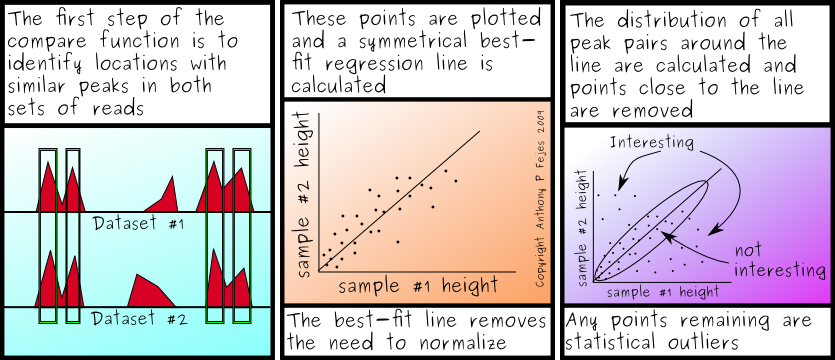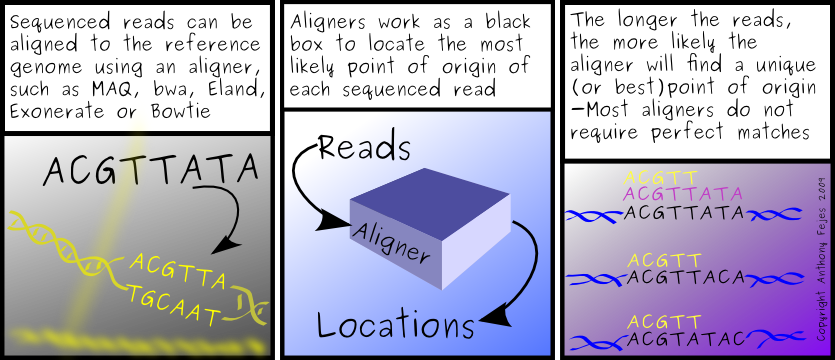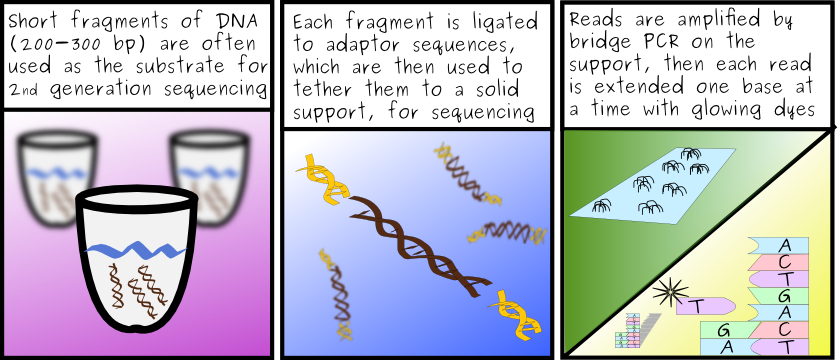[This talk was given by a good friend, Dr. Dawn Bowdish - and is WAY outside of the topics that I normally cover. However, there is some interesting work with SNPs which is worth mentioning, if you can get past the non-genomic part at the start - which I suggest. As always, mistakes are my misunderstanding of the topic - not the speakers!]
Talk title: The class A scavenger receptors are associated with host defense towards Mycobacteium tuberculosis.
Lab URL:
http://www.bowdish.ca/labPost-doc was done at oxford, where most of the work that will be presented today was done.
1.The role of the scavenger receptors in Mycobacterium tuberculosis in infection
2.Polymorphisms in scavenger receptors and susceptibility to M. Tuberculosis infection
3.The role of the cytoplasmic tail in scavenger receptor signalling
4.Evolution of scavenger receptor domains.
Macrophages are beautiful cells. They don't have a single form – you know it when you see it. Paraphrased: 'phooi to t-cells.'
[at this point, the projector died. Dawn offers to tell macrophage stories... Someone wants to know all about Oxford. “It was very Harry Potter.” AV people mess around in the back....]
Macrophages are central to everything she studies. They are an integral part of mammalian biology:
- Embryonic development, organ structure
- chronic disease
- genetic diseases
- infectious disease
- autoimmunity
- cancer
Macrophages receptors are indicators of phenotype, function and biomarkers for disease phenotype
Scavenger receptors: several classes of them exist. The only conserved feature is that they bind modified lipids (acLDL) with varying efficiency.
Class A scavengers: includes 2 that Dawn studies specifically: MARCO and SRA (I and II). Found in all organisms from plants to humans, yeast.. etc. They are involved in cell-cell interactions, and have been adapted to many other cell-interactions.
Marco (Macrophage receptor with collagenous structure) and SRA (scavenger receptor class A)have similar ligands, which is very broad. “Molecular fly paper.” In general, restricted to expression in macrophages)
They only bind some bacterial well, but not all.
SRA plays a role in homeostasis and infectious disease, septic shock.
Marco plays a role in infectious disease. (Redundancy in vitro – requires double knock out.)
The binding domains, however are very different. In Marco, binding is at the end of the receptor. In SRA, it's the 2nd last.
MARCO is not expressed in any cell line, and is not in bone marrow macrophage. Thus, it's often overlooked.
Three types of activation: Classical, alternative, innate (hypothesized). Marco seems to be innate activation, and the properties/phenotype are not well understood. Possibly a phenotype for immuno-modulation, but when it's used is not known. Fills a niche, which doesn't quite fit with the known models in mouse.
So, how does it work in TB? (Not something Dr. Bowdish intended to study, but ended up falling into it in oxford.)
There are many types of uptake – and many new ones have been discovered. There's still room for more receptors, however, and it's possible that the scavenger receptors might be involved in TB.
SRA is up-regulated in response to IFN-gamma and BCG, knockouts are susceptible to BG induced shock. But MARCO? No clear connection. There is still no human anti-MARCO antibody, so these experiments can't be repeated for human cells.
Collaboration with Dr. Russell and Sakamoto from Cornell, and ended up getting involved. They had a ligand (Trehalose dimycholate) that no one had ever found a receptor for – and that turned out to be MARCO. Using TDM coated beads, you could see if it was picked up.
Use a cell line with MARCO receptor – and the beads. MARCO showed that it picked up the beads, SRA did not pick up beads. Could knock it down with a specific inhibitor for MARCO. (shown with fluorescence microscopy.)
Previous work had shown that TDM induces cytokine production in a MyD88 dependent fashion. There was a TLR2 &4 response – so did a knock out, and showed that it could use either of them.
Minimum signal complex required is Marco + TLR (2 or 4). This recreates the pro-inflammatory response. Could never recreate this with SLA.
Is MARCO the missing factor in TDM signalling? Yes. So, it's not that they've lost the pathway or ability – just lacking the particular co-receptor to interact with TDM.
How MARCO works in cytoplasm, however, is another story – it has a very small cytoplasmic tail... which includes a predicted myristolation site. Made constructs with different part of the tail – which didn't change the signalling much. The model proposed, however, is that MARCO is a tethering receptor, which binds or transports the TDM beads to TLRs via CD14. (Similar to the LPS signalling complex.) This was tested with a NF-kb reporter system.
More experiments were done using the knockouts without MARCO or DKO, and were able to continue along to find that MARCO appears to be involved in response to M. Tuberculosis.
Up till now, this was in vitro and mouse. A switch was made to human models.
Started looking for groups looking at SNPs in humans. Did a study interested in whether these SNPs are related to human disease. (Adrian Hill?)
It works well because TB has been around for a long time – 40,000 years.
The Hill group has samples from Gambia, to study TB. Screened 3,500 individuals (HIV free), do controls for the usual (age, sex, etc), and then screened 25SNPs in MARCO and 22 in MSR1.
[Presents a fancy map, showing coverage.]
Much to surprise: there were no SNPs what so ever in SRA – found 4 in MARCO with association to susceptibility and resistance. However, they were all in introns. They were found in introns, and discovered that it was in a putative splice site. (There were no splice variants known in mice, at the time – and there are still none known.) Using assays, Dr. Bowdish found there were indeed splice variants, caused by the SNP.
Oddly enough, this splice variant seems to knock out the binding domain of MARCO. (And the SNP seems to be predominant in african populations - and is very uncommon in caucasians.)
Tentative model: TDM induces MARCO expression. MARCO is regulated at transcriptional and post-translational modification levels. Thus, splice variants may induce differences in response to TB bacteria.
Goals for the future:
- Understand role of macrophage receptors in infectious disease
- Attribute functional significance of genetic variability in macrophage genes
- Characterize phenotype of innate activation & determine if this can be manipulated by immunomodulation
- Collaborating with people studying other receptors.
Open day on October 26th, 2009 : Institute of infectious disease research opening day.
Labels: SNPS, Talks




